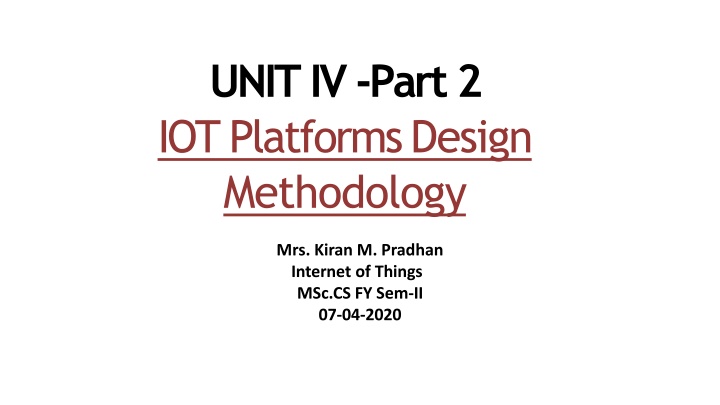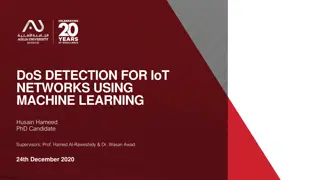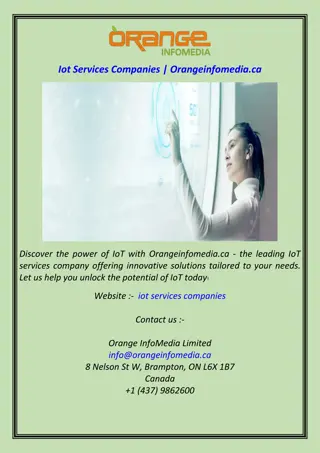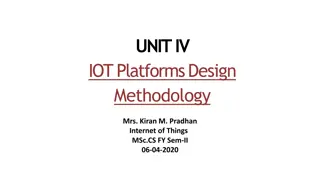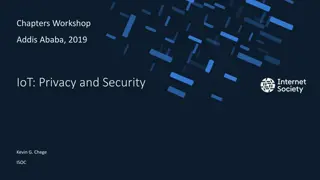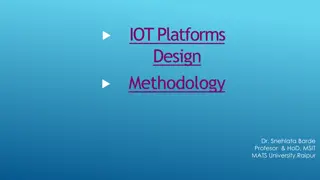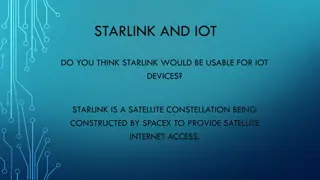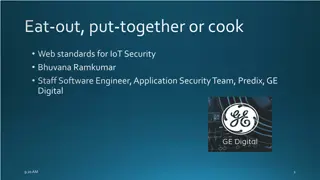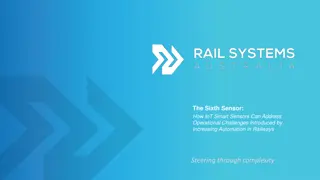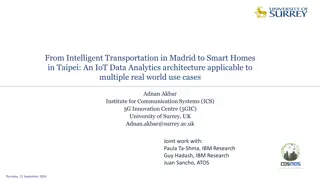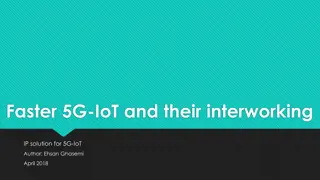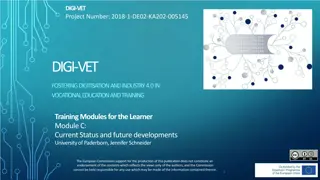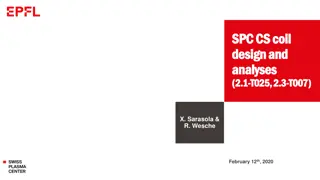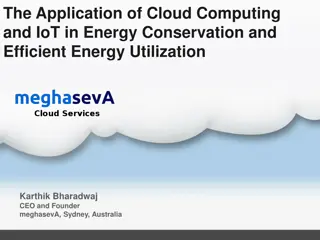IoT Platform Design Methodology and Specifications
This content elaborates on the IoT platform design methodology, including purpose and requirement specifications, process specification, domain model specification, and information model specification. It also covers IoT level specifications, functional view specification, operational view specification, device and component integration, and application development. The process specification details the purpose of a home automation system and its behavior, system management, data analysis, application deployment, and security requirements. Additionally, it explains the steps involved in process specification and domain model specification in IoT system design.
Download Presentation

Please find below an Image/Link to download the presentation.
The content on the website is provided AS IS for your information and personal use only. It may not be sold, licensed, or shared on other websites without obtaining consent from the author.If you encounter any issues during the download, it is possible that the publisher has removed the file from their server.
You are allowed to download the files provided on this website for personal or commercial use, subject to the condition that they are used lawfully. All files are the property of their respective owners.
The content on the website is provided AS IS for your information and personal use only. It may not be sold, licensed, or shared on other websites without obtaining consent from the author.
E N D
Presentation Transcript
UNIT IV -Part 2 IOT PlatformsDesign Methodology Mrs. Kiran M. Pradhan Internet of Things MSc.CS FY Sem-II 07-04-2020
IOT Platforms DesignMethodology It includes: Purpose & RequirementsSpecification Process Specification Domain Model Specification Information Model Specification Service Specification
IOT Platforms DesignMethodology IoT Level Specifications Functional view Specification Operational View Specification Device & component Integration Application Development
ProcessSpecification Purpose : A home automation system that allows controlling of the lights in a home remotely using a webapplication. Behavior : The home automation system should have auto andmanual modes. In auto mode, the system measures the light level in the roomand switches on the light when it gets dark. In manual mode, the system provides the option of manually and remotely switching on/off the light. System Management Requirement : The system should provide remote monitoring and control functions. Data Analysis Requirement : The system should perform local analysis of the data. Application Deployment Requirement : The application should be deployed locally on the device, but should be accessibleremotely Security Requirement : The system should have basic user authentication capability.
Process Specification(secondstep) In this step, the use cases of the IoT system are formally described basedon and derived from the purpose and requirement specifications.
Domain ModelSpecification The third step in the IoT design methodology is to define the Domain Model. The domain model describes the main concepts, entities and objects in the domain of IoT system to be designed. Domain model defines the attributes of the objects and relationships betweenobjects. Domain model provides an abstract representation of the concepts, objects and entities in the IoT domain, independent of any specific technology or platform.
Domain ModelSpecification The entities, objects and concepts defined in the domain model include: Physical Entity : Physical Entity is a discrete and identifiable entity in the physical environment (e.g. a room, a light, an appliance, a car,etc.). Virtual Entity : Virtual Entity is a representation of the Physical Entity in the digital world. Device :provides a medium for interactions between Physical Entities and Virtual Entities. Devices are either attached to Physical Entities or placed near Physical Entities.
Domain ModelSpecification Resource : Resources are software components which can be either "on-device" or "network-resources". On-device resources are hosted on the device and include software components that either provide information on or enable actuation upon the Physical Entity to which the device is attached. Service : Services provide an interface for interacting with the Physical Entity. Services access the resources hosted on the device or the network resources to obtain information about the Physical Entity or perform actuation upon the Physical Entity.
Thankyou Ref: IOT by Ashdeep Bahga &VijayMadisetti 51
